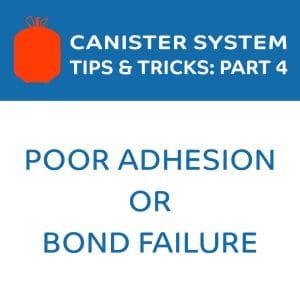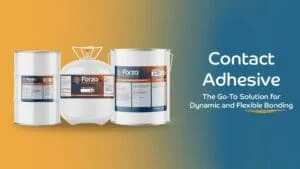Canister System Tips & Tricks Series, Part 4: Poor Adhesion or Bond Failure
The canister system is one of the simplest and most efficient adhesive system to use, but sometimes mistakes happen, and things go wrong. This article is part of a series outlining common industry mistakes, and what to do to ensure the same doesn’t happen to you!
Are you having poor adhesion, delamination, peeling or bond failure with your adhesive? There’s several things that may have gone wrong, but thankfully there are ways to prevent and troubleshoot these problems.
Were the substrates clean before the adhesive was applied? If there was any dust, dirt, oil or moisture on the substrates that weren’t removed, this could result in poor adhesion or bond failure. To prevent this from happening, always make sure you brush the substrates with a hand brush or a clean cloth before applying the adhesive – and don’t use oil-based cleaners as that will create an oily surface.
Was there not enough adhesive applied? Or maybe too much? If there wasn’t enough adhesive applied, this could result in a poor bond. If there was too much adhesive applied, solvents and moisture could have been trapped as the glue dried, resulting in bond failure. Aim for 80% coverage to prevent either of these mistakes from happening, and that should result in a better bond.
Was the adhesive not left to dry, or left to dry too long before bonding? If the adhesive wasn’t given enough time to dry, it may not have reached its full tack before bonding, resulting in a poor bond. Likewise, if the adhesive was left too long before bonding, it may have lost all its tack and therefore caused bonding failure.
To prevent either of these situations from happening, make sure you test the tack to determine when the substrates are ready to bond. Tap the glue with your knuckle – if it doesn’t transfer, the substrates are ready to bond. If you don’t feel any tack, re-apply the adhesive and wait until substrates are ready to bond, check this time to make sure the adhesive doesn’t dry too much.
If these tips don’t fix the problem, or if you have more questions, contact us! We would be happy to help!




